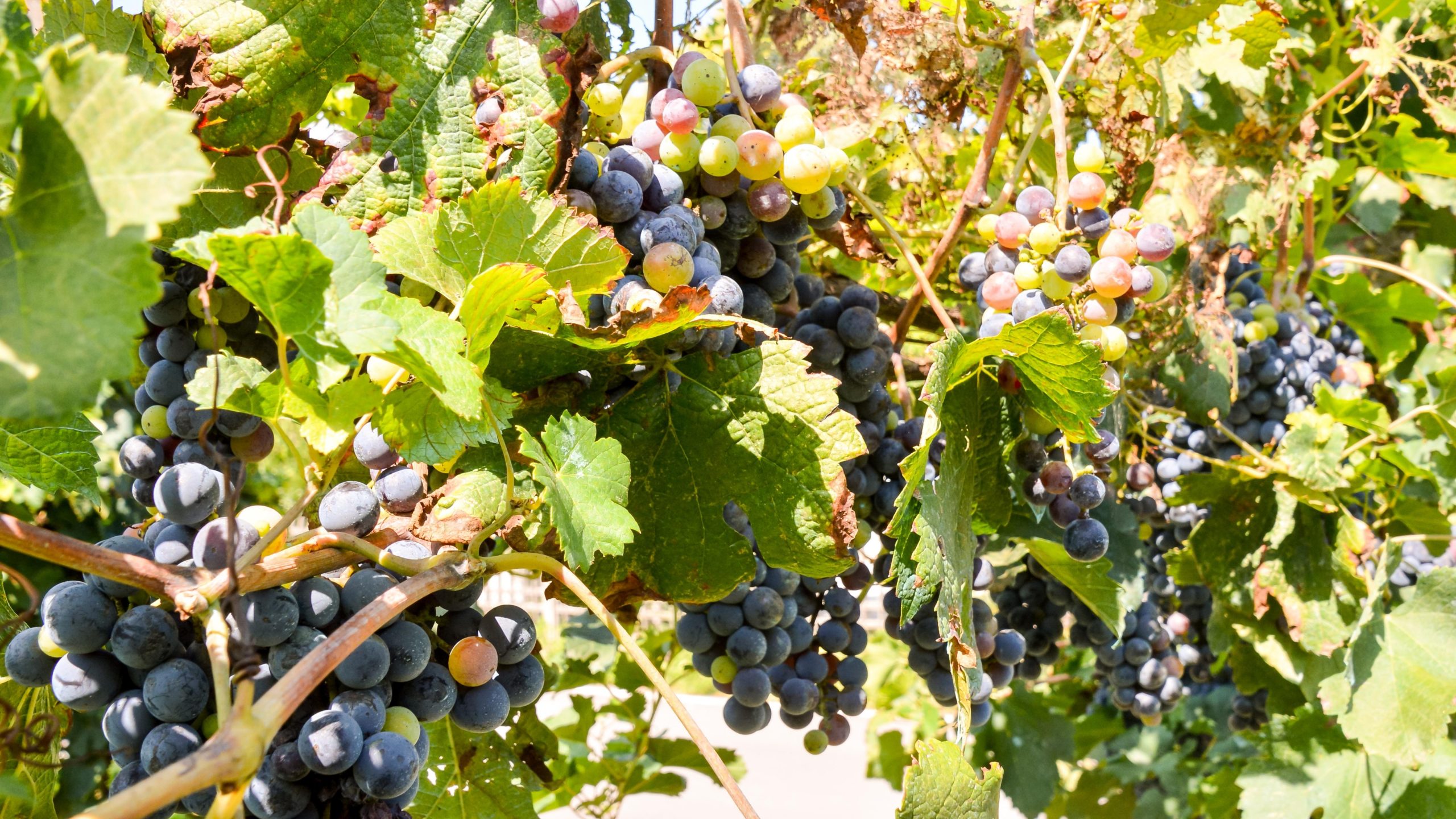Drought is a very topical topic. And viticulture is affected by this extreme climatic phenomenon. Articles are already circulating in the media in which journalists of "diverse fact" are spoiling the words of specialists in viticulture and winemaking and throwing in the public space at least hilarious statements. To write that "because of the prolonged drought some dry wines will become sweet" is like saying that this year’s low wheat harvest will make the bread unsalted.
It is true that the type of wine according to its sugar content depends to the greatest extent on the amount of sugars accumulated in the grapes, from the entry into the parga until the harvest. Technologies know how to "consult" the vineyard and to request the initiation of the harvest according to the finished product – the wine they want to obtain.
When we look for the definition of vines, first of all we find out that it is a liana. Or, lianas grow in overwhelming proportions in warm areas, so the vine is more tolerant to dry seasons than many of the cultures useful to man. The vine will never reach a lethal level of dehydration during a dry season. However, water stress due to water scarcity can have a negative impact on the health of the vine, the level of production, the yield in the wort and the quality of the wine, as the final product.
Vines do not multiply primarily by seeds. Therefore, it is one of the plants that, in order to continue its existence, will sacrifice its own "children" (grapes), letting them dry out, so as not to consume its resources limited by the stress of water scarcity. The first sign that it will do this is the drying of the leaves. The vine loses most of its leaves only when their ability to circulate water and nutrients is halved, due to the lower pressure of water in the stem and root. Such cases are extremely rare, because the first to be slaughtered will be grapes. If some of the active leaves (the young ones) dry out and photosynthesis is reduced, the grapes will be deprived of the food source and will also dry out. In dehydrated grapes, normal physiological processes are no longer produced, which will balance the balance between sugars and acidity, at the values desired by oenologists to obtain the planned wines.
What basically happens in the vineyard?
The extreme drought in the phenophase of the growth and compaction of bunches prevents the normal development of grape berries, which remain small, and bunches are rare in the berries, instead of being stocky and compact, as in most grapes for wine. In wines of white varieties may appear an unpleasant "green flavor". Red wines obtained from grapes that have suffered from drought will be of poor quality and will not be suitable for aging. However, black wine grape varieties are generally more drought-resistant than white varieties, because that’s how they evolved genetically. [2]
At the entry into the parga of the grapes a light water stress can be beneficial in the management of vegetative growths (no more babies are issued, those that already exist will stagnate in growth), the growth of the berries is noticeably stagnated and the physiological activity is directed to coloring (accumulation of anthocasians and tannins) and the evolution of the compounds that give the grapes flavors. But high levels of water stress affect the amount of harvest by up to 40% just from the reduction in the size of the grape berries, which are much smaller than the standard of the variety, are crushed and wilted.
In the first two weeks after entering the parga the growth of the grains and the gradual accumulation of sugars may not show signs that they would be affected by drought. In conditions of moderate water stress the berries will develop normally, but there will be fewer resources for the maturation of shoots and for the second (autumn) wave of root growth. Extreme stress due to water scarcity close to harvesting can also cause premature fall of the grains from the bunches. The ripening of the grapes can be delayed or even blocked, which leads to a decrease in quality and increases the risk of getting sick or exposed to the predatory attack of birds, which also do not easily find food sources in drought conditions. [4]
During the ripening of grapes the concentration in sugars may seem increasing, but it is the result of dehydration, not a real increase by physiological accumulation. Small berries are usually associated with high quality, but if the small size comes from excessive water stress, the grapes may not produce high-quality wines. The varietal character of each variety develops in the last weeks before full maturity and therefore, water stress at this stage affects the development of polyphenolic flavors and compounds. From where at the entrance to the parga the varieties with black grapes promised a beautifully colored harvest, there is a risk that not enough coloring compounds will accumulate and the wines will be light-colored, pale and uninteresting. [3]
Growers with vineyards on fertile and deep soils may notice a welcome reduction in the growth of vines, which will reduce the harvest, but has a modest impact on the ripening of grapes. On shallower soils, without irrigation, it can be noticed the delay of maturation and side effects with manifestation in the next year (shoots do not wood, and the multiannual wood will be sensitive to frosts over the winter).
What happens in grapes?
The accumulation of sugars is constantly increasing at temperatures between 20 and 30 degrees Celsius. At over 33 degrees Celsius, the accumulation of sugars stops abruptly. Malic acid (the one that gives the sour taste) steadily decreases from the entrance to the parga until harvesting, as long as the temperatures do not reach 32-33 degrees Celsius, in which case it can collapse to zero. The content in anthocasians and amino acids increases progressively in the temperature range of 20 – 25 degrees Celsius, and above this limit the accumulation begins to decrease, at 35 degrees Celsius stopping completely. In other words, the metabolic processes inside the "grape-plant" cease at temperatures higher than 35 degrees Celsius. [1]
What would be done to limit the effects of extreme drought?
- Grassing of the intervals between the rows of vines. Plantations where the minimum of tillage is done or they are not done at all, have vineyards with deep roots, grasses on the soil surface maintaining a less arid microclimate.
- Avoiding carnite (removing the tips of the shoots) too early and if it is done, must be left at least 5 to 7 active leaves above the bunches. Foliage should be kept healthy and as compact as possible. There should be a minimal yellowing (aging) of the basal leaves before harvesting, if the foliar apparatus is properly maintained and airy, but not depleted.
- Careful thinning of bunches is necessary to balance the harvest. It is not advisable to maintain a harvest at the level of a normal year, in a vineyard stressed by drought.
- Delaying the unwrapped, if the drought or the extreme heat wave is prolonged, so as not to expose the grapes to sunburn.
The singular case when drought is desired in vineyards is late autumn, when the oenologist wants to vinify overripe or botritized grapes. Even in the struggle with the sciences of nature, it is still man who decides what, how, how, and when to do, in order to achieve his goals and overcome limits.
Sources:
[1] Carbonneau, A.; Torregrosa, L.; Deloire, A. et all – Traite de la Vigne, 3-rd edition, Dunod, 2020, 179
[2] Martinson and Lakso, 2016. How grapevines respond to stress.
[3] Pool and Lakso, 2000.Recognizing and Responding To Drought Stress In Maturing Grapevines
[4] https://extension.umd.edu/resource/drought-stress-vine-performance-and-grape-quality






